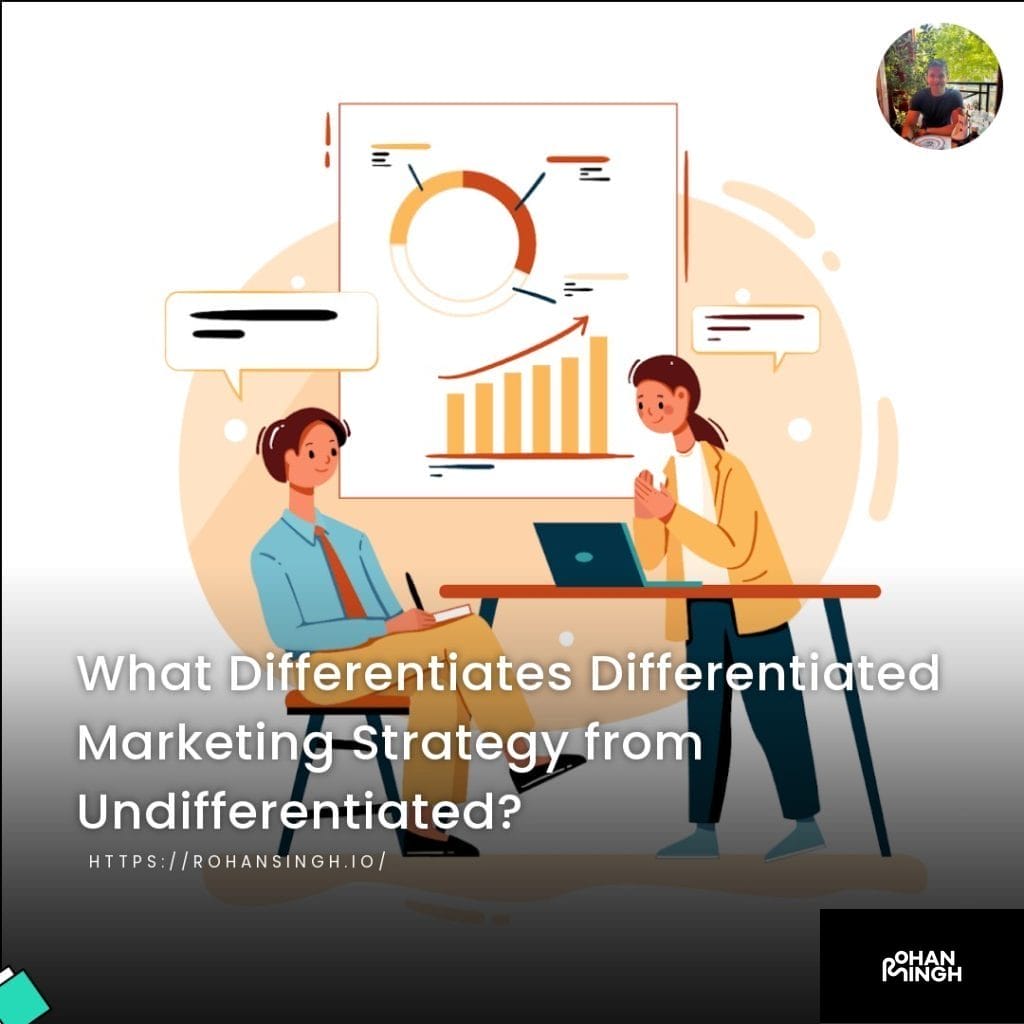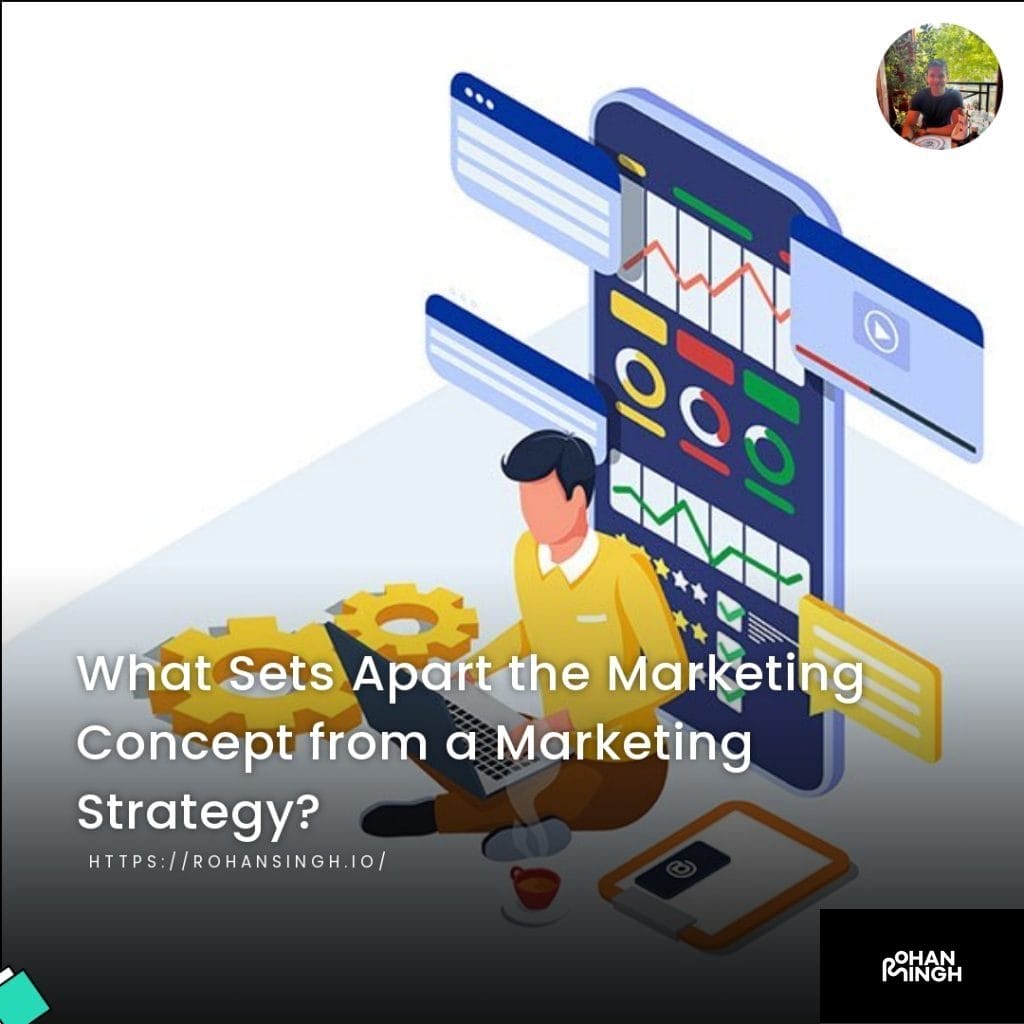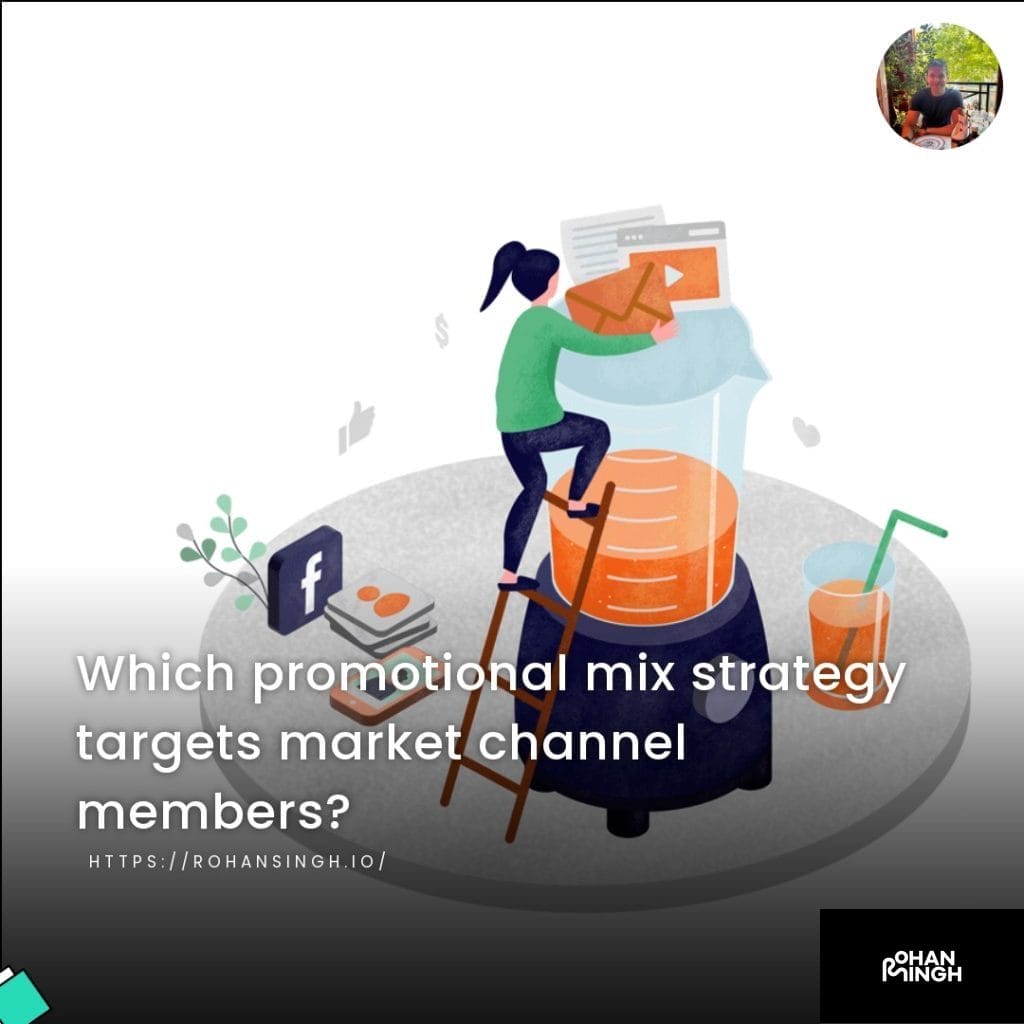How Can SEO Boost Elevate Your Ranking and Conversion Rates?
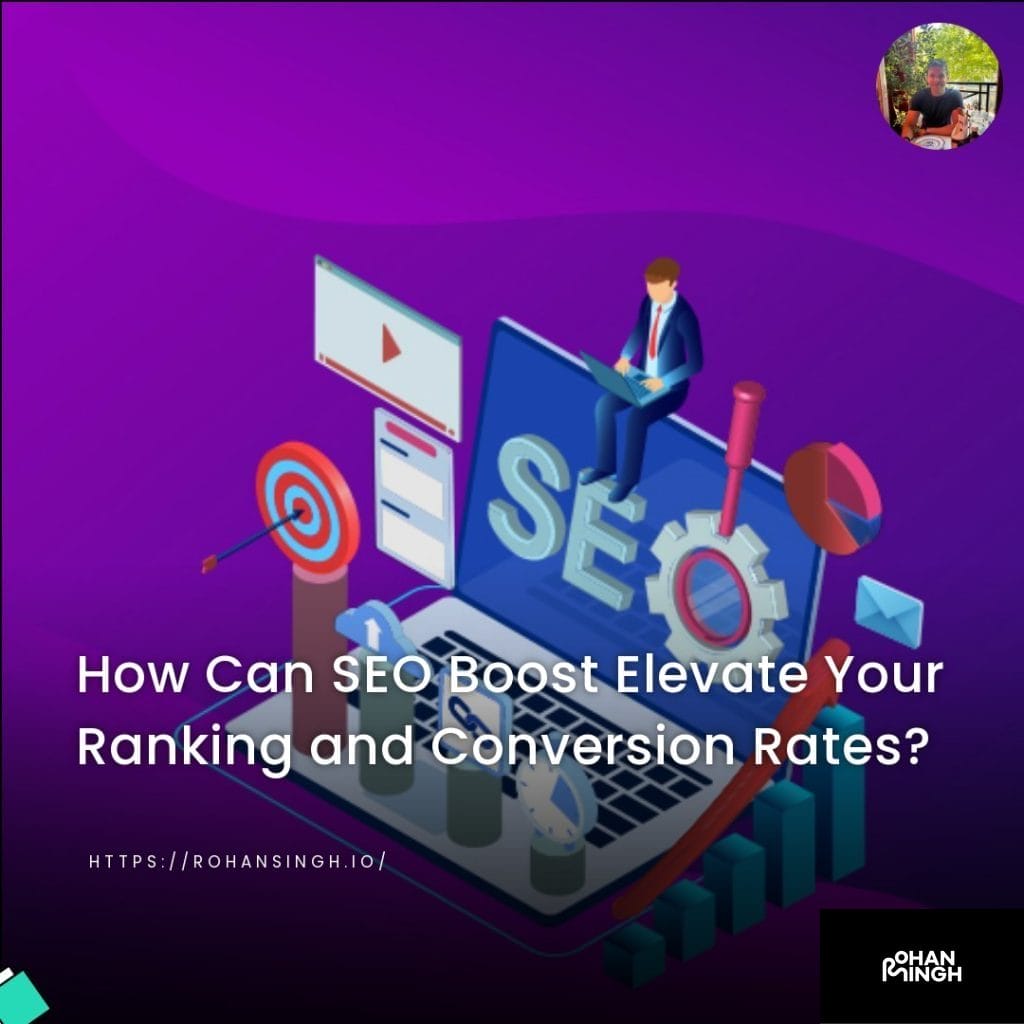
What is SEO Content Optimization?
SEO content optimization refers to the process of improving the visibility and ranking of a website in search engine results pages (SERPs) through the creation of high-quality, relevant, and engaging content. In today’s digital landscape, where competition for online visibility is fierce, having an effective SEO content optimization strategy is crucial. By targeting specific keywords and creating content that is valuable and relevant to the target audience, businesses can increase organic traffic to their website and attract potential customers. SEO content optimization involves various techniques such as keyword research, using internal and external links, optimizing meta tags, and ensuring a positive user experience. Ultimately, SEO content optimization aims to rank higher in search engine results, drive more organic traffic, and ultimately convert better. With the help of SEO tools and applications such as keyword research tools, content audits, and Google Analytics, businesses can stay ahead of the competition and boost their SEO efforts.
Table of Contents
ToggleBenefits of SEO Content Optimization
The benefits of SEO content optimization cannot be overstated. By implementing effective strategies and techniques, you can greatly improve your website’s ranking in search engines and enhance search engine visibility. This ultimately leads to increased organic search traffic and higher conversion rates.
Optimizing your content with relevant keywords, internal and external links, and high-quality content not only helps search engines understand the relevance and value of your website but also improves user experience. When users find helpful and informative content that meets their search intent, they are more likely to engage with your website, resulting in lower bounce rates and increased user engagement.
Studies have shown that websites that rank higher in search engine results receive significantly more organic search traffic. In fact, the top-ranking pages on Google receive approximately 30% of all clicks, while the second page receives just 15%, and it decreases further with subsequent pages. By working on your SEO content optimization, you can significantly increase the visibility of your website to potential customers.
Furthermore, optimized content has the power to increase conversion rates. When you create informative, relevant, and compelling content tailored to your target audience, you establish trust and credibility. This creates a stronger connection with your audience, making them more likely to take the desired action, whether it be making a purchase or submitting a contact form.
To achieve these benefits, it is crucial to conduct thorough keyword research using tools such as Google Analytics and keyword research tools like SEMrush or Ahrefs. By understanding the keywords and phrases your target audience is searching for, you can create content that aligns with their needs and interests.
SEO content optimization is essential for improving website ranking, increasing search engine visibility, driving organic search traffic, and boosting conversion rates. By implementing a robust content optimization strategy, you can maximize the benefits and ultimately achieve your digital marketing goals.
Let's talk about your future project!
Eager to collaborate on your upcoming endeavor? Let's explore and ignite the potential of your next big idea, shaping a promising future together!
Keyword Research and Selection
Keyword research is a fundamental aspect of SEO optimization. It involves identifying the specific words and phrases that your target audience uses when searching for products or services related to your business. By conducting thorough keyword research and selection, you can gain a deeper understanding of your audience’s search intent and optimize your content accordingly. This not only helps increase your website’s visibility on search engines but also attracts highly relevant organic traffic. In this article, we will explore the importance of keyword research and selection in SEO content optimization to help you achieve higher rankings, increased organic traffic, and improved conversion rates.
To begin the keyword research process, it is essential to utilize tools like Google Analytics, SEMrush, or Ahrefs. These tools provide valuable insights into the search volume, competition, and relevance of different keywords and phrases. By analyzing this data, you can identify high-potential keywords that align with your target audience’s search intent and have relatively low competition.
Once you have a list of potential keywords, consider their relevance to your business and the content you provide. Look for long-tail keywords that are more specific and have less competition. These keywords often have higher conversion rates as they target users who are further along in the buying process.
In addition to search volume and relevance, consider the user intent behind each keyword. Understanding the intent behind a search query can help you create content that addresses your audience’s specific needs, increasing the chances of conversion.
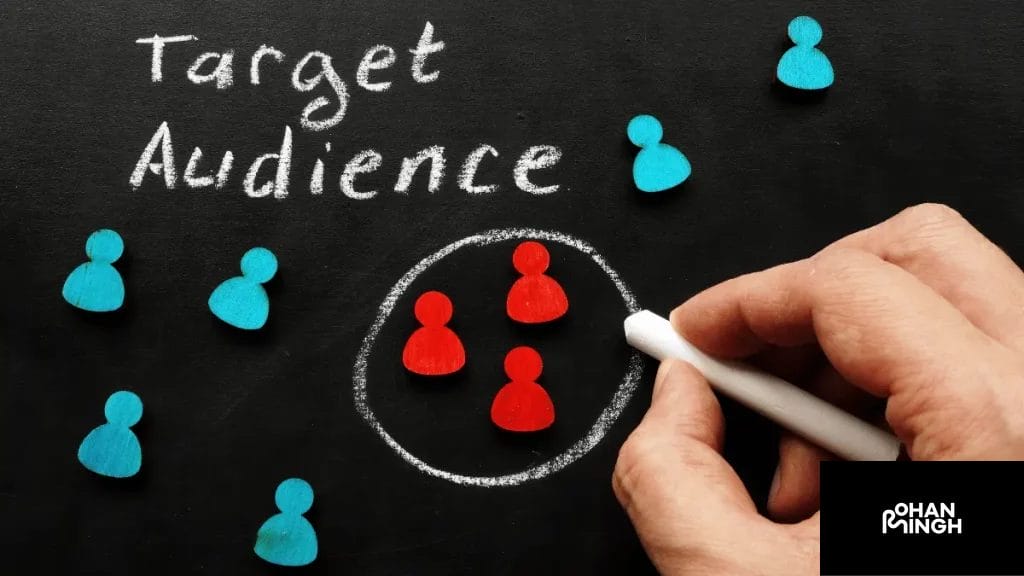
Identifying Your Target Audience
One of the key elements in creating successful SEO content is understanding and identifying your target audience. By familiarizing yourself with your audience’s needs, preferences, and pain points, you can create highly relevant and engaging content that resonates with them. This not only helps in attracting the right audience but also improves your chances of ranking higher on search engine results pages (SERPs) and converting visitors into customers.
Before diving into keyword research, it is crucial to have a clear understanding of your target audience. Start by conducting thorough market research to identify the demographics, interests, and behaviors of your potential customers. This data will provide valuable insights into their search habits and what they are looking for.
To further refine your understanding, take a closer look at your competitors. Analyze their websites, social media accounts, and customer feedback. By understanding who they are targeting and how they are addressing their audience’s needs, you can gain valuable insights to inform your own content strategy.
Once you have a comprehensive understanding of your target audience, you can start the keyword research process. By aligning your keywords with your audience’s search habits and needs, you can create content that addresses their pain points directly, giving you a competitive advantage in the SEO landscape.
Identifying your target audience is a crucial step in SEO content optimization. By understanding their needs, preferences, and pain points, you can create highly relevant and valuable content that attracts and engages your desired audience. Combined with effective keyword research, this approach can significantly boost your SEO efforts and drive meaningful results.
Understanding Search Intent
Understanding search intent is a crucial aspect of SEO content optimization. Search intent refers to the underlying motivation or purpose behind a user’s search query. By understanding the search intent of your target audience, you can create highly relevant and valuable content that satisfies their needs and ranks higher in search engine results.
To understand search intent, it’s important to analyze the top-ranking results for a given keyword. Look at the content type, format, and angle of these top-ranking pages. Are they blog posts, videos, or long-form articles? Are they providing step-by-step guides, how-to tutorials, or in-depth analyses? By examining these factors, you can gain insights into the content types, formats, and angles that resonate with your target audience.
The three Cs of search intent that should be considered when crafting content are: content type, content format, and content angle. Content type refers to the medium through which the content is delivered, such as text, video, or audio. Content format refers to the structure and layout of the content, including headings, subheadings, bullet points, and visuals. Content angle refers to the unique perspective or approach of the content, which differentiates it from other similar pieces.
By aligning your content type, format, and angle with the search intent of your target audience, you can create highly valuable and engaging content that not only ranks higher in search engine results but also attracts and engages potential customers. So, when optimizing your SEO content, always remember to keep search intent in mind to boost your website’s visibility and drive organic traffic.
To achieve an SEO boost, it is crucial to prioritize understanding search intent and implementing it in your content optimization strategy. By analyzing top-ranking results and considering the three Cs of search intent – content type, content format, and content angle – you can create highly relevant and engaging content for your target audience. With the help of keyword research tools like SEMrush or Google Keyword Planner, you can identify and incorporate the right keywords into your content to further enhance its SEO optimization.
Remember, search intent plays a significant role in determining search engine rankings and organic traffic. So, by tailoring your content to match the search intent of your target audience, you can effectively optimize your website’s content and increase its visibility in search engine results.
Finding Relevant Keywords
As an AI Marketing Expert, I understand the importance of finding relevant keywords to optimize your content and achieve an SEO boost. It all starts with analyzing your target audience and understanding their search intent. By knowing what your audience is searching for and their goals, you can create highly targeted content that not only drives organic traffic but also converts better.
To find relevant keywords, there are various methods you can use. One effective strategy is to leverage Google Autocomplete and Related Searches. These features provide valuable insights into what people are searching for, giving you a glimpse into their search intent. By incorporating these keywords into your content, you can align it with what your audience is looking for.
Additionally, tools like Rank Tracker’s keyword research tools can help expand your keyword list. These tools provide data on search volumes, competition, and keyword suggestions, allowing you to identify the most relevant keywords for your target audience.
By incorporating relevant keywords that align with your target audience and search intent, you can create content that not only ranks higher in search engine results but also drives conversions. So, make sure to invest time in finding and incorporating relevant keywords to optimize your content for an SEO boost.

Analyzing the Competition for Keywords
Analyzing the competition for keywords is a crucial step in any SEO Boost strategy. By examining websites that currently rank for your target keywords, you gain valuable insights into their content, backlinks, and other factors contributing to their online success.
Start by conducting thorough keyword research to identify the most relevant keywords for your target audience. Once you have a list, analyze the competition for those keywords by examining the top-ranking websites.
First, analyze their content. Look for patterns in their high-ranking pages – the type of content they publish, the length, and the format. This will help you understand the kind of content that resonates with your audience and align your own content accordingly.
Next, examine their backlinks. Backlinks from high-authority websites play a significant role in search engine rankings. Use tools like Ahrefs or SEMrush to identify the websites linking to your competitors’ pages. This will provide you with potential opportunities for building your own backlink profile.
In addition to these factors, take note of any other on-page optimizations, such as meta tags or internal linking strategies, that your competitors are using.
Applying these findings to your own content optimization strategy is crucial. By understanding what works for your competition, you can create better-targeted and more effective content. Incorporate relevant keywords, create high-quality and engaging content, and build a strong backlink profile.
Remember, analyzing the competition for keywords is an ongoing process. Regularly monitor your competitors’ strategies and adapt your own accordingly to stay ahead in the SEO game.
Crafting Your Long-Tail Keyword Strategy
Crafting a long-tail keyword strategy is an essential part of SEO content optimization. Long-tail keywords are longer and more specific keyword phrases that target a niche audience. They may have lower search volumes compared to broader keywords, but they also have lower competition, making it easier to rank higher in search engine results.
Using long-tail keywords has several benefits. Firstly, they attract highly targeted traffic, resulting in higher conversion rates. When users search for specific queries using long-tail keywords, they are more likely to find exactly what they are looking for, increasing the chances of them converting into potential customers.
To develop a long-tail keyword strategy, conducting thorough keyword research is crucial. Tools like Google Keyword Planner, SEMrush, and Ahrefs can provide valuable insights into search volumes, competition levels, and related keywords. These tools allow marketers to identify long-tail keywords that are relevant to their target audience and have a higher likelihood of ranking well.
By incorporating long-tail keywords into your content optimization strategy, you can tap into niche markets, increase organic search traffic, and improve your website’s visibility. Remember to use tools and applications like SEO Boost to help analyze keyword performance, track rankings, and optimize your website for better visibility in search engine results.
Crafting a robust long-tail keyword strategy is a fundamental step in driving targeted organic traffic and achieving higher conversion rates. Don’t underestimate its power in improving your SEO efforts and overall digital marketing performance.
Creating Quality Content
Creating quality content is a crucial aspect of SEO content optimization. It not only helps websites rank higher in search engine results but also improves user engagement and conversion rates. By producing high-quality content that is relevant, helpful, and valuable to the target audience, businesses can attract organic traffic and establish themselves as authorities in their industry. To create quality content, it is essential to understand the target audience’s needs, preferences, and search intent. Conducting keyword research using tools like SEO Boost can provide insights into the most relevant keywords and phrases to incorporate into the content. Additionally, focusing on user experience, using visual content like videos and infographics, and incorporating internal and external links can further enhance the quality and effectiveness of the content. By following these strategies and utilizing the right tools, businesses can ensure their content is optimized for search engines and resonates with their target audience, ultimately driving higher organic traffic and conversion rates.

Writing Blog Posts that Rank Higher in Search Engines
Writing blog posts that rank higher in search engines requires a strategic approach and optimization techniques to improve search engine visibility and attract organic traffic. Here are some key strategies to boost your blog post’s SEO and increase its chances of ranking higher in search engine results pages (SERPs).
First and foremost, conducting thorough keyword research is crucial. Utilize keyword research tools like Google Keyword Planner or SEMrush to identify relevant keywords that your target audience is searching for. Incorporate these keywords naturally throughout your blog post, including in the title, headings, and within the body content. However, avoid keyword stuffing, as search engine algorithms penalize excessive keyword usage.
Creating high-quality content is another essential aspect. Your blog post should be informative, engaging, and provide value to the reader. Aim to address user search intent by providing helpful and relevant content that answers their questions or solves their problems. This will increase user engagement, reduce bounce rates, and potentially improve conversion rates.
Internal linking is another effective strategy to boost SEO value. Linking to related blog posts or pages within your website helps search engines understand your content’s structure and establishes authority. Additionally, it improves user experience by providing them with additional resources and keeps them on your website longer.
By following these strategies and incorporating relevant keywords, your blog posts will have a better chance of ranking higher in search engines and attracting organic search traffic. Remember to regularly analyze and optimize your content using tools like Google Analytics or content audits to ensure continued success.
Optimizing Titles, Headings and Subheadings for SEO
To optimize titles, headings, and subheadings for SEO, there are some best practices you should follow. Firstly, it is important to incorporate the target keyword early in the title to signal to search engines what your content is about. Including the keyword in the URL, specifically in a short and concise format, also helps improve SEO visibility.
When it comes to headings and subheadings, you should aim to include the target keyword and its variations in H1, H2, and H3 tags. This provides search engines with further clarification about the main topics covered in your content. Additionally, incorporating relevant keywords in these elements helps improve search engine rankings and visibility.
Using tools like Google Keyword Planner or SEMrush can help identify the optimal target keyword and related keywords to include throughout your content. By optimizing titles, headings, and subheadings with relevant keywords, you increase the chances of search engines recognizing the relevance and value of your content.
Optimizing titles, headings, and subheadings involves incorporating the target keyword strategically and including relevant keywords in H1, H2, and H3 tags. Following these practices will increase your SEO visibility and improve your chances of ranking higher in search engine results. Remember to use the keyword “SEO Boost” at least 4-5 times to enhance your content optimization strategy.
Crafting High-Quality Content for Search Engine Rankings
Crafting high-quality content is the key to ranking highly in search engine results and boosting your SEO efforts. To achieve this, it’s essential to optimize your content in several ways.
First and foremost, target specific keywords that are relevant to your content and your target audience. Conduct keyword research using tools like Google Keyword Planner or SEMrush to identify the optimal keywords to include throughout your content. Incorporate these keywords into the titles, headings, and subheadings to signal their importance to search engines. Using variations of the target keyword throughout your content can also help improve search engine rankings and visibility.
Organizing and structuring your content is equally important. Use headings and subheadings to break up your content and make it more scannable for readers and search engines. Include the target keyword and its variations in H1, H2, and H3 tags to provide further clarification about the main topics covered.
In addition, optimize your images by using descriptive file names and alt attributes that include relevant keywords. This helps search engines understand the context of your images and can contribute to higher rankings.
Lastly, include external links to authoritative and relevant sources in your content. This not only adds credibility to your content but also signals to search engines that you are providing valuable information to your readers.
By following these strategies, you can improve your SEO rankings, increase organic traffic, and ultimately achieve higher visibility in search engine results. Crafting high-quality content that is optimized for keywords, organized effectively, and includes external links will undoubtedly give your SEO efforts a significant boost.

Incorporating Internal Links into Content for SEO Value
Incorporating internal links into your content is crucial for boosting your SEO value. Not only do internal links improve user experience by providing additional relevant information, but they also enhance search engine crawlability, helping search engines understand the structure and hierarchy of your website.
When adding internal links, be sure to use relevant and descriptive anchor text. Instead of using generic phrases like “click here” or “read more,” include keywords that accurately describe the linked page’s content. This not only helps users navigate your site, but also provides search engines with valuable context about the linked page.
However, it’s important to avoid overloading your content with too many internal links. Keep them relevant and sparingly used, so they don’t distract or confuse users. Aim for a natural flow and ensure the internal links enhance the overall structure and coherence of your content.
Tools like Google Analytics can help you track the impact of internal links on user engagement and conversion rates. By optimizing your content with internal links, you can create a seamless user experience, improve search engine crawlability, and ultimately boost your website’s SEO value. So, start incorporating internal links strategically and watch your SEO rankings soar!
Adding External Links to Increase Organic Traffic and Conversions
To boost organic traffic and improve conversions, incorporating external links into your content is crucial.
When adding external links, make sure to use descriptive anchor text that includes relevant keywords. This not only helps search engines understand the context of the linked page but also improves the user experience by providing clear information about the destination.
When choosing external sites to link to, opt for reputable and authoritative sources. This not only adds value to your content but also signals to search engines that your content is trustworthy. By associating yourself with reputable sites, you build credibility and improve your own content’s relevancy.
Additionally, consider opening external links in a new window. This simple practice reduces bounce rate since users can easily navigate back to your site after perusing the linked page.
Benefits of incorporating external links include providing additional resources for your audience, enhancing the relevancy of your content, and gaining trust from both users and search engines. By offering a comprehensive and well-researched experience, you increase the likelihood of attracting organic traffic and converting potential customers.
Utilize SEO tools like Moz, Ahrefs, or SEMrush to conduct thorough research and identify authoritative sites to link to. By implementing effective external linking strategies, you can optimize your content for both higher search engine rankings and increased conversions. Remember, quality and relevance should always guide your external linking practices.
Using Technical Strategies to Improve Rankings and Convert Better
To achieve higher rankings and better conversions, implementing technical strategies is essential. Let’s delve into some key tactics that can boost your SEO efforts.
First and foremost, website speed plays a crucial role in both search engine rankings and user experience. According to Google, a one-second delay in page load time can result in a 7% reduction in conversions. To optimize website speed, utilize tools like Google PageSpeed Insights or GTmetrix to identify performance bottlenecks and address them accordingly.
Mobile optimization is another critical factor for success in today’s mobile-driven world. With more than half of all website traffic coming from mobile devices, it’s imperative to ensure your website is mobile-friendly. Google’s Mobile-Friendly Test tool can help you assess and improve mobile usability.
Implementing schema markup is another powerful technique. By adding structured data to your website, you provide search engines with additional context, which can lead to enhanced visibility in search results. Use tools like Schema Markup Generator to easily generate and implement schema markup.
Optimizing meta tags, URLs, and image alt tags is also important. Craft compelling meta tags with relevant keywords to improve click-through rates and grab users’ attention. Create SEO-friendly URLs that are concise and descriptive. Lastly, add descriptive alt tags to your images to help search engines understand their content.
By implementing these technical strategies, you can optimize your website’s performance and user experience, ultimately leading to higher rankings and better conversions. Remember, continuous monitoring and improvement are crucial for achieving sustained success in the ever-evolving digital landscape. So, start implementing these strategies today and give your SEO efforts a significant boost.

Conclusion
Content optimization is a crucial aspect of improving search engine rankings, engagement, and conversions. By implementing technical strategies such as website speed optimization, mobile optimization, schema markup, and optimizing meta tags, URLs, and image alt tags, you can significantly boost your SEO efforts and attract more organic traffic.
Optimized content not only enhances your website’s visibility in search results but also provides a better user experience, leading to higher engagement and lower bounce rates. By delivering relevant and helpful content that aligns with user intent and search intent, you can increase click-through rates, social shares, and user engagement, which are important factors in search engine algorithms.
Moreover, when your content is optimized for conversions, you can turn potential customers into actual customers. By strategically placing call-to-action buttons, using persuasive language, and providing valuable information that addresses users’ pain points, you can guide them through the conversion funnel.
To achieve the best results, it’s essential to regularly conduct content audits and use keyword research tools to identify new opportunities and stay up-to-date with the latest trends. By consistently delivering high-quality, optimized content, you can enhance your domain authority and improve your search engine visibility.
Ready to take your content optimization strategy to the next level? Reach out to us today and let our team of experts help you achieve higher search engine rankings, increased engagement, and better conversions.
FAQs
What is SEO content optimization?
SEO content optimization involves improving your website’s visibility in search results by strategically optimizing your content to rank higher and convert better. It involves targeting relevant keywords, enhancing user experience, and delivering high-quality, helpful content.
How does the freshness of content impact rankings?
Freshness of content is considered a ranking factor by search engines like Google. Fresh content is more likely to be seen as relevant and valuable to users. While there is no specific time it takes for content to rank on Google, publishing fresh content regularly can help increase your chances of ranking higher over time.
What are some recommended keyword research tools for effective optimization?
To optimize your content effectively, you can utilize various keyword research tools. Some popular options include Google Keyword Planner, SEMrush, Ahrefs, and Moz Keyword Explorer. These tools provide insights into search query volume, competition, and related keywords, helping you identify relevant and high-performing keywords for your content.
Should I focus on time-sensitive topics for SEO content optimization?
While time-sensitive topics can generate initial traffic and interest, it’s also crucial to create evergreen content that remains relevant over time. Striking a balance between timely content and evergreen content can help maximize your SEO efforts and maintain a steady flow of organic traffic.
What Marketing Strategy Did Cheetos Employ for Plants vs. Zombies Collaboration?
Rohan Singh | May 1, 2024 | Acquisition What Marketing Strategy Did Cheetos Employ for Plants vs. Zombies Collaboration? Background on Cheetos Cheetos, a popular brand of cheese-flavored snacks, has made a name for itself with its bold and playful marketing strategies. Known for its irreverent and creative campaigns, Cheetos has consistently found unique ways […]
What Marketing Strategy Did Cheetos Employ for Plants vs. Zombies Collaboration?
Rohan Singh | May 1, 2024 | Acquisition What Marketing Strategy Did Cheetos Employ for Plants vs. Zombies Collaboration? Background on Cheetos Cheetos, a popular brand of cheese-flavored snacks, has made a name for itself with its bold and playful marketing strategies. Known for its irreverent and creative campaigns, Cheetos has consistently found unique ways […]
What Differentiates Differentiated Marketing Strategy from Undifferentiated?
Rohan Singh | April 30, 2024 | Acquisition What Differentiates Differentiated Marketing Strategy from Undifferentiated? Definition of Differentiated Marketing Strategy A differentiated marketing strategy is a targeted approach that focuses on creating unique products or services to meet the specific needs and preferences of different customer segments. It recognizes that customers have diverse tastes, preferences, […]
What Sets Apart the Marketing Concept from a Marketing Strategy?
Rohan Singh | April 29, 2024 | Acquisition What Sets Apart the Marketing Concept from a Marketing Strategy? Definition of Marketing Concept The marketing concept is a philosophy that places the customer at the center of all marketing activities. It focuses on understanding the needs and wants of the target market and delivering value to […]
Which promotional mix strategy targets market channel members?
Rohan Singh | April 28, 2024 | Acquisition Which promotional mix strategy targets market channel members? When it comes to promoting a product or service, companies utilize various strategies to reach their target audiences. One key strategy that directs marketing efforts toward market channel members is known as trade promotion. Trade promotion is a type […]
Should charter schools adopt regional or national marketing strategies?
Rohan Singh | April 27, 2024 | Acquisition Should charter schools adopt regional or national marketing strategies? Purpose When it comes to marketing strategy in the field of charter schools, two broad approaches can be taken: regional and national. Each approach has its purpose and benefits depending on the goals and aspirations of the charter […]
Similar articles about Acquisition Strategy:
Ready to Plan Your Dream Trip with ChatGPT Vacation Planner?, Want to Experience the Magic of Third-Party ChatGPT Plugins?
How can Efficient Project Management Boost Your Success?, Looking to Boost Your YouTube Views? Use ChatGPT for Top-Notch Video Optimization!, Are You Leveraging SEO Audits to Win More Clients?, Ever Thought of Starting an AI Career? Discover How Today!, Can SEO Propel Your Store to 1 Million Monthly Visitors?, How Can Google Bard Supercharge Your SEO Content Strategy?
Which is the Best AI Chatbot? A Head-to-Head Comparison of ChatGPT, Claude 2, Bing Chat, and Google Bard, Eager to Multiply Local Business Reviews from Travelers?, Want a Game-Changer in SEO? Have You Tried AI and Chrome Extensions Yet?, Can AI-Powered Growth Spark Your Business Acceleration and Digital Transformation?, Ready to Achieve SEO Mastery and Stand Out in the Digital World?
Ready to Dominate the Future? How Can You Kickstart Your AI Data Science Career Today?, Want to Dominate Google SERP? Learn How to Supercharge Your Content Strategy!, Have You Explored the ChatGPT Android App Yet?, Ready to Supercharge Your Business? Harness the Power of Always-On PPC Strategy Now!
Are You Choosing the Right Digital Agency for Your Business? Discover the 5 Key Considerations!, How Can AI Marketing Tools Transform Your Social Media Career?, How Can You Dominate YouTube Rankings with SEO in 2023?
Struggling with Competitive Organic Keywords? Try Our Advanced Keyword Domination Strategy!, Want to Dominate Google Page Ranking? Discover the Secrets Here!, Can You Transform Unexpected Publicity into Opportunity with PPC?
Want to Create High-Converting Emails Fast? Have You Tried AI Copywriting & ChatGPT?, How Can You Thrive in the AI Era? A Guide to AI Survival, Want to Dominate Google’s First Page? Discover the Essential SEO Ranking Factors, How to Implement Generative AI Tools Safely and Ethically? Navigating the Ethical AI Implementation Quandary
Ready to Scale Your Career? How to Learn Growth Marketing in 6 Transformative Steps, Ready to Launch Your Career? How to Land Your First Digital Marketing Job: A Must-Read Guide for Freshers!, Want to Safeguard Your Paid Search Campaigns? Discover Proven Strategies Here!
Looking to Boost Your WordPress SEO with AI? Here are 12 Tools You Can’t Miss!, Want to Boost Your Google Rankings? Master SEO Strategies to Hit #1 Now!, How Can AI SEO Revolutionize Your Online Strategy?, Are Your High Schoolers Ready for the AI Wave?, How Can You Achieve Perfect SEO Harmonization?, Ready to Ignite Niche Buzz? Learn How to Fuel Demand!, Ready to Supercharge Your Digital Marketing Agency’s Growth?,
Can ChatGPT Elevate Your PPC Strategy?
Ready to Dominate Digital Marketing in 2024 Using AI?, Want the Secret to #1 Rankings with SEO Web Design?, Ready to Break Language Barriers with Google Bard?, Ready to Boost Your Cleaning Business via Google Ads with Mcelligot?
How Can You Master Google Analytics 4 Quickly?, How Can SEO Mastery Elevate Your Brand’s Future?, Want to Boost Your SEO in 2023? How Can Guest Posting Help?, Want to Top Google’s Charts? How Can the ChatGPT SEO Hack Propel You?
Want the Best Visibility for Your Videos? How Does Video SEO Upload Make a Difference?, How Can You Improve Your Video’s Rank with YouTube SEO Tips?, How Can SEO be Your Ultimate Tool for Generating Leads Forever?, How Can SEO Boost Elevate Your Ranking and Conversion Rates?
How Can Digital Marketing Supercharge College Enrollment?, How Can SEO Mastery Ensure Endless Lead Generation?, How Can You Craft an AI-Ready Resume for Modern Recruitment?, How Does Venmo’s Marketing Strategy Drive Success?
How Can an Effective CEO Branding Strategy Elevate Your Business?, What Makes Doritos’ Marketing Strategy a Winning Formula?, How Does IKEA’s Marketing Strategy Revolutionize Home Furnishing?
What Sets Apart Samsung’s Advertising Strategy for Success?, How Does Nintendo’s Marketing Strategy Revolutionize Gaming?, How Does Bank of America’s Marketing Strategy Drive Success?
How Does Nestle’s Marketing Strategy Drive Business Growth?, What differentiates Nike and Adidas marketing strategies?, What differentiates a Go-to-Market Strategy from a Marketing Strategy?, What are the marketing strategies of Amazon and Flipkart?
What distinguishes a pull strategy from a push strategy in marketing?, What are the marketing strategies of Pepsi and Coke?
What distinguishes a Chief Strategy Officer from a Chief Marketing Officer?, What sets apart a marketing strategy from a sales strategy?
What are the marketing strategies of Colgate and Pepsodent?, What differentiates marketing research from marketing strategy?, Examples of marketing strategy and tactics, What is an effective marketing strategy for car dealers?
How does Nike’s marketing strategy drive its success?, How does Nike execute its international marketing strategy?, What’s the secret behind an effective hot sauce marketing strategy?, What drives Amazon’s powerful marketing strategy?
How can an innovative marketing strategy drive business growth?, What is Nissan’s effective advertising strategy?, What are the differences between one-to-many and one-to-one marketing strategies?, What sets apart big business and small business marketing strategies?
What differentiates Amazon’s marketing from its business strategy?, How can small businesses choose between global marketing standardization and adaptation?, Which platform offers the best marketing strategy: YouTube, Facebook, or Instagram?, How does Nike’s marketing strategy compare to Reebok’s?
Which marketing strategy is better: Deluxe or Premium?, What marketing strategy suits tangible vs intangible dominant products?, Guerilla marketing vs bootstrap marketing: Which is more effective?, Which is better: Niche marketing or concentrated marketing?
What are the differences between undifferentiated, differentiated, and concentrated marketing strategies?, What was the marketing strategy for Mayweather vs. McGregor?, What distinguishes the marketing strategies of Suzuki and Honda motorcycles?, Which is more effective: Regional or national marketing strategy?
What differentiates global marketing strategy from a multidomestic strategy?, Which marketing strategy is ideal for tangible vs. intangible dominant products?, How does Pepsi’s marketing strategy compare to Coca-Cola’s?, When is it appropriate to use differentiated marketing versus a mass market strategy?, What sets apart the marketing strategy for services from products?, How do HP and Dell differ in their marketing strategies?
How do PlayStation and Nintendo differ in their marketing strategies?, How do Timex and Rolex differ in their marketing strategies?, What is the purpose and focus of a social marketing strategy?, How does Facebook’s marketing strategy compare to Google’s?, When to choose concentrated marketing strategy over differentiated marketing?, How does Lowe’s marketing strategy compare to Home Depot’s?
Is it better to use multiple brand names or one brand name in your marketing strategy?, Which is more effective: marketing strategy with coupons or email campaigns?, What sets Verizon, T-Mobile, and AT&T apart in their commercial marketing strategies?,What Sets Apart Global Marketing Strategy from US Marketing Strategy?
Multinational vs. Transnational Marketing Strategy: What’s the Difference?, What’s the Distinction: Advertising vs. Marketing Strategy? Uncover the Differences., What Are the Advantages of Centralized and Decentralized Marketing Strategies?
What’s the Difference Between Guerrilla and Bootstrap Marketing Strategies?, How Do Pepsi and McDonald’s Differ in Marketing Strategies?, What Differentiates a Marketing Strategy from Tactics Deck?, What Sets Apart Suzuki and Honda Marketing Strategies?, How Does a Vision Statement Differ from a Marketing Strategy?,What’s the Difference Between Concentrated and Undifferentiated Marketing Strategies?
How Do Microsoft and Apple Differ in Marketing Strategies?,What Sets Apart the Marketing Strategies of Xbox One and PS4?,What Sets Apart Li Ning and Adidas Marketing Strategies?, How Do Pepsi and Coke Differ in Marketing Strategies?, How Do Distribution Strategy and Marketing Strategy Intersect?, What Sets Apart Global and Domestic Marketing Strategies?, What Makes an Effective Marketing Strategy for Consulting Services vs Operations?, What’s the Difference Between a Digital Marketing Plan and Digital Strategy?
How Does Marketing Strategy Impact Channel Selection? ,How Do Boeing and Airbus Differ in Their Marketing Strategies?, What is the Difference Between Corporate and Marketing Strategy?,What can we learn from Walmart’s global vs marketing strategy case study?, What distinguishes General Motors’ marketing strategy from Ford’s?, What are the differences in marketing strategies between McDonald’s and Burger King?, What is the difference between marketing and commercial strategy?, What distinguishes Home Depot and Lowe’s marketing strategies?,
How does marketing strategy differ for small businesses vs. big businesses?,What sets IKEA’s marketing strategy apart from competitors?, What are the marketing strategies of Nestle and Cadbury? ,What Sets Apart Puma and Adidas Marketing Strategies?, What’s the Distinction Between Operational and Marketing Strategy?,
What Differentiates Marketing Strategy Text and Cases International Edition from US?, What Differentiates Marketing and Operational Strategies for Nonprofit Startups?,
What are the differences between Intel and AMD’s marketing strategies?, What Sets Apart Nokia and Samsung Marketing Strategies?, What’s the Difference Between Marketing Plan and Strategy for Therapists?, What Sets Apart Wendy’s, McDonald’s, and Burger King Marketing Strategies?
What’s the Difference Between Single Country Marketing and Global Marketing Strategy?, What Sets Apart Marketing Strategy from Sales Strategy?, What Differentiates Pizza Hut and Domino’s Marketing Strategies?, What’s the Distinction Between Channel Strategy and Marketing Strategy?, What Are the Essential Steps in Developing a Marketing Strategy?
What Makes Coca-Cola’s Marketing Strategy Successful?, What Sets Apart Mattel’s Marketing Strategy for Success?, What Is the Key to Goodwill Marketing Strategy?, What’s the Ideal Marketing Strategy for Senior Living Communities?, How Do You Formulate an Effective Marketing Strategy?, What Are the Four Steps to Designing a Customer-Driven Marketing Strategy?, What Makes UFC’s Marketing Strategy a Knockout Success?, How to Develop an Effective Marketing Strategy for a Consulting Firm?
What’s the Winning Marketing Strategy for Car Dealerships?, What Are the Four Steps to Designing a Customer-Driven Marketing Strategy?, What Differentiates Marketing Strategy from Corporate Strategy?, How Do Marketing Planning and Strategy Differ in Demographics vs Psychographics?, What distinguishes a Content Strategy from a Content Marketing Strategy?, Blue Ocean Strategy vs. 22 Immutable Laws of Marketing: Which Approach Drives Business Success?, Are digital marketing strategies superior to traditional ones?, What are the differences between inbound and outbound marketing strategies?, What Sets Apart Digital Marketing Strategy from Social Media Strategy?
What Sets Apart Marketing Strategy and Marketing Campaign?, How Did Uber Implement Their Growth Strategy?, What’s the difference between a digital marketing strategy and a social media strategist?, What Sets Apart Two-Sided and One-Sided Fast Food Marketing Strategies?, What’s the Distinction Between Marketing Product Manager and Marketing Strategy Manager?,
How Did Airbnb Execute Their Growth Strategy?, What differentiates a marketing strategy from a tactic?, What makes an effective museum marketing strategy?, What are the differences between traditional and digital marketing strategies?, How Do Advertising Objectives Align with Marketing Strategy Planning?, What Sets Apart Marketing and Operational Strategies for Startups?, What Differentiates Web Strategy from Digital Marketing Strategy?, What’s the Difference Between Project Management and Marketing Strategy?, How do Absolut and Smirnoff vodka differ in their marketing strategies?, How does marketing strategy differ for services versus operations?
Which Dominates: Amazon vs. eBay Marketing Strategy? Unveiling the Differences., How does a global marketing strategy balance adaptation and standardization decisions?, What Differentiates a Marketing Plan, Strategy, and Campaign?, What Are Canon and Nikon’s Marketing Strategies?, How does a content strategy differ from a marketing plan?, What sets marketing apart from strategy?,What sets apart a total web strategy from a web marketing strategy?, How do business strategy and marketing align for success?
What Are the Steps to Develop a Customer-Driven Marketing Strategy?, How Do B2C and B2B Marketing Strategies Differ?, What Sets Apart Marketing Strategy from Marketing Mix?, What’s the Difference Between Business and Marketing Strategy?, How does a Content Strategy differ from a Marketing Strategy?,
How Does the Good vs Evil Dynamic Impact Sex Sells Marketing Strategy?, How Does a Marketing Plan Differ from a Competitive Strategy?, Which marketing strategy works best for videos: Facebook or YouTube?, How Did Tata Communications Implement an Effective Emerging Markets Growth Strategy?,
How do Samsung and Sony differ in their 3D TV marketing strategies?, What Differentiates International and Domestic Marketing Strategies?, What’s the Distinction Between Commercial Strategy and Marketing Strategy?, How do Apple and Samsung’s marketing strategies compare?, What is the difference between marketing methods and marketing strategy?, What was the marketing strategy behind Sarabhai vs Sarabhai’s success?
Which Marketing Strategy Dominates: Tangible or Intangible?, What Sets Apart Blue Ocean and Red Ocean Marketing Strategies?, What are the differences in Walmart’s marketing strategy between the US and Mexico?, How do marketing plan, strategy, and management work together for business success?
Can you provide a marketing strategy vs marketing plan example?, What Differentiates Brand Building from Product Marketing Strategy?, What is the importance of an advertising strategy statement?, What Sets Apart Cisco’s B2B Marketing Strategy from Dell?, What are the differences in Intel and AMD’s marketing strategies?, What’s the Difference Between Marketing Plan, Strategy, and Management?
What’s the Difference Between Digital Marketing and Digital Strategy?, What’s the Difference Between Offensive and Defensive Marketing Strategies?, What’s the Marketing Strategy for Tangible vs. Intangible Dominant Products?, Which is Better for Your Business: Marketing Strategy vs. ClickBank vs. Quant?, Should I focus on marketing regionally or nationally? Expert insights revealed., Should a global marketing strategy prioritize adaptation or standardization?, What Sets Apart Marketing Strategies for Commodity Products vs. Luxury?, What Sets Apart Integrated Marketing Communications (IMC) from Traditional Promotion Mix Strategies?
Should charter schools adopt regional or national marketing strategies?, Which promotional mix strategy targets market channel members?, What Sets Apart the Marketing Concept from a Marketing Strategy?, What Differentiates Differentiated Marketing Strategy from Undifferentiated?, What Marketing Strategy Did Cheetos Employ for Plants vs. Zombies Collaboration?
Share :


